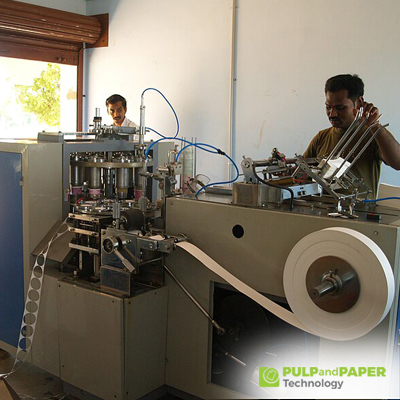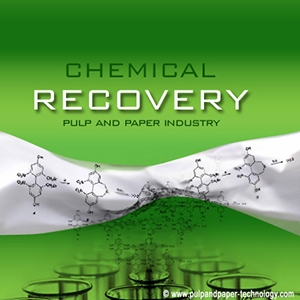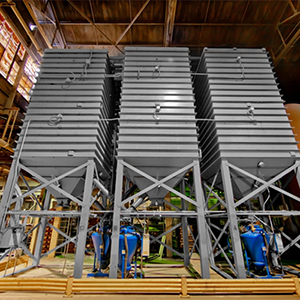Optimizing Production: The Evolution of Paper Converting Machinery

Introduction
The paper converting industry plays a crucial role in transforming raw paper material into various finished products like packaging materials, labels, envelopes, and more. Over the years, advancements in technology have revolutionized paper converting machinery, leading to increased efficiency, precision, and sustainability in production processes.
A. Historical Perspective
Historically, paper converting was a labor-intensive process, involving manual cutting, folding, and gluing of paper sheets. The introduction of mechanical paper converting machines in the 19th century marked a significant shift towards automation and mass production. Early machines focused on basic functions like cutting and folding, gradually evolving to include more complex operations.
B. Key Components of Modern Paper Converting Machinery
Cutting Systems: Modern paper converting machines are equipped with advanced cutting systems that ensure precise cutting of paper rolls or sheets. This includes rotary knives, laser cutting technology, and computerized control systems that optimize cutting accuracy and minimize waste.
Folding Mechanisms: Folding is a critical process in paper converting, especially for products like envelopes and packaging materials. Converting machinery now includes sophisticated folding mechanisms with adjustable settings for different fold types and sizes, improving productivity and versatility.
Gluing and Laminating Units: Adhesive application is essential in paper converting for sealing, bonding, and laminating layers. Automated gluing and laminating units in modern machinery offer precise adhesive application, reducing material waste and ensuring strong, durable bonds.
Embossing and Die-Cutting Features: Embossing adds decorative or functional patterns to paper products, while die-cutting creates custom shapes and designs. Advanced paper converting machines integrate embossing and die-cutting features with high-speed capabilities, enhancing product aesthetics and customization options.
Quality Control Systems: Quality control is paramount in paper converting to maintain product consistency and meet industry standards. Modern machinery incorporates sensor-based systems, vision inspection technology, and automated feedback mechanisms to detect defects, monitor production parameters, and ensure output quality.
C. Technological Innovations Driving Optimization
Digitalization and Automation: Industry 4.0 technologies have transformed paper converting by enabling interconnected, data-driven production processes. Automated systems with programmable logic controllers (PLCs) and human-machine interfaces (HMIs) streamline operations, reduce downtime, and facilitate real-time monitoring and adjustments.
Precision Engineering: Advancements in mechanical and electrical engineering have led to the development of high-precision components in paper converting machinery. This includes servo motors for accurate motion control, precision bearings for smooth operation, and advanced sensors for precise measurements, enhancing overall machine performance.
Energy Efficiency: Sustainability is a key focus in modern paper converting. Machinery manufacturers are integrating energy-efficient components like variable frequency drives (VFDs), LED lighting, and eco-friendly materials to reduce energy consumption, lower carbon footprint, and comply with environmental regulations.
Integration of IoT and Big Data Analytics: IoT-enabled sensors embedded in paper converting machines collect real-time data on operational parameters, production metrics, and maintenance requirements. Big data analytics algorithms analyze this data to optimize production schedules, predict equipment failures, and implement proactive maintenance strategies, improving overall efficiency and reliability.
D. Challenges and Future Trends
While paper converting machinery has evolved significantly, challenges such as adapting to rapid market changes, addressing skilled labor shortages, and ensuring cybersecurity remain. Future trends in the industry include advancements in robotics for automated material handling, adoption of AI-driven predictive maintenance solutions, and the development of sustainable materials and processes for eco-friendly production.
E. Emerging Trends in Paper Converting Machinery
Digital Printing Integration: The integration of digital printing technology into paper converting machinery has opened new possibilities for on-demand printing, variable data printing, and personalized packaging. Digital printing units integrated into converting machines allow for quick job setup, reduced setup waste, and enhanced flexibility in handling short print runs and customized designs.
Smart Packaging Solutions: Smart packaging technologies, such as RFID tags, QR codes, and sensors, are being integrated into paper converting machinery to enable intelligent packaging solutions. These technologies provide real-time tracking, authentication, and interactive features, enhancing product traceability, brand engagement, and consumer experience.
Automation in Changeover Processes: Changeover processes, where machinery switches between different product specifications, are critical in paper converting. Automation technologies like quick-change tooling, automated setup procedures, and pre-programmed job recipes streamline changeovers, reduce downtime, and improve production efficiency.
Advanced Material Handling Systems: Modern paper converting machinery incorporates advanced material handling systems, such as robotic arms, conveyor belts, and automated stacking units. These systems optimize material flow, reduce manual handling errors, and increase throughput, especially in high-volume production environments.
Sustainability Initiatives: Environmental sustainability is a growing concern in the paper industry.
Paper converting machinery manufacturers are investing in sustainable design practices, energy-efficient components, and recycling solutions. This includes using biodegradable materials, optimizing waste management systems, and adopting circular economy principles to minimize environmental impact.
Remote Monitoring and Control: IoT-enabled connectivity allows for remote monitoring and control of paper converting machinery. Manufacturers and operators can access real-time data, monitor production status, diagnose issues remotely, and implement corrective actions, improving operational efficiency and reducing maintenance costs.
F. Impact of Optimized Paper Converting Machinery
Increased Productivity: Optimized paper converting machinery leads to increased productivity through faster production cycles, reduced setup times, and higher throughput rates. This translates to greater output volumes, improved resource utilization, and enhanced competitiveness in the market.
Improved Quality and Consistency: Advanced automation and quality control systems in modern machinery ensure consistent product quality, reduced defects, and compliance with industry standards. This enhances customer satisfaction, builds brand reputation, and reduces rework or waste due to quality issues.
Cost Savings: Efficiency gains from optimized machinery result in cost savings for paper converters. Reduced material waste, lower energy consumption, minimized downtime, and optimized labor utilization contribute to overall cost reduction and improved profitability.
Flexibility and Customization: The flexibility of modern paper converting machinery allows for rapid customization of products, quick adaptation to changing market demands, and efficient handling of diverse product portfolios. This agility enables paper converters to offer tailored solutions, address niche markets, and capitalize on emerging trends.
Environmental Benefits: Sustainable practices integrated into paper converting machinery contribute to environmental conservation. By reducing energy consumption, minimizing waste generation, and promoting recycling, optimized machinery aligns with green initiatives and regulatory requirements, supporting a more sustainable paper industry.
Conclusion
The evolution of paper converting machinery has revolutionized the paper industry, driving efficiency, quality, and sustainability. With continuous technological innovations and a focus on optimization, modern machines are poised to meet the evolving demands of the paper converting sector, ensuring cost-effective production of high-quality paper products.









